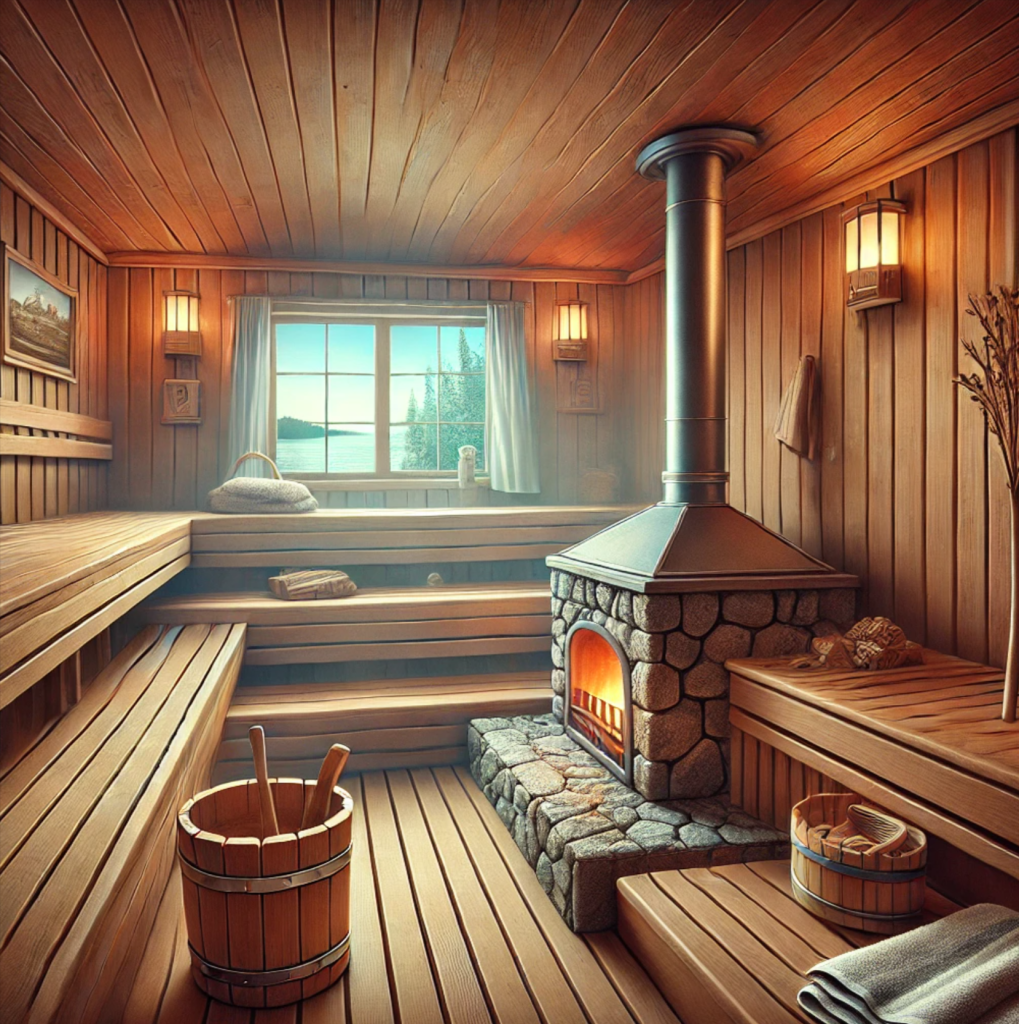In Finland, the sauna is much more than a hot room for relaxation; it’s a deeply rooted cultural tradition, a place of social gathering, and even a spiritual retreat. Finnish people of all ages enjoy the sauna regularly, and understanding this tradition is essential for anyone preparing for the Finnish citizenship test, as it is one of Finland’s most cherished customs.
History of the Finnish Sauna
The origins of the Finnish sauna trace back over 2,000 years, with early saunas constructed as simple pits in the ground lined with stones that were heated by fire. Initially, saunas served a dual purpose as both a bathhouse and a place for shelter during cold winters. By the Middle Ages, saunas evolved into wooden cabins, heated by a stove and typically located near lakes, which allowed for an invigorating cold plunge after a hot session.
Historically, the sauna was also used for practical and ceremonial purposes. Before hospitals were commonplace, saunas served as hygienic locations for childbirth. The high temperatures provided a sterile environment, and sauna structures were often the cleanest part of a Finnish home.
Traditional Sauna Etiquette
Sauna etiquette in Finland is simple yet important to follow. Saunas are typically enjoyed in the nude, which is a symbol of equality and openness in Finnish culture. If visiting a sauna with friends or family, conversation is often kept to a minimum, allowing for relaxation and contemplation. It is also common to throw water on the hot stones to create “löyly,” or steam, which increases humidity and enhances the experience.
The use of a “vasta” (also called “vihta”), a bundle of birch branches, is an essential part of Finnish sauna tradition. The vasta is lightly tapped on the skin, improving circulation and giving a fresh, natural scent to the sauna room. While it may seem unusual to newcomers, using a vasta is an enjoyable part of Finnish sauna culture, especially during midsummer when fresh birch leaves are available.
When sharing a sauna with others, it’s polite to avoid lengthy stays and allow space for everyone to enjoy the warmth. In public saunas, it’s customary to rinse off before entering, ensuring a clean and pleasant experience for all.
Modern Sauna Practices in Finland
Today, saunas are more accessible than ever, with over 2 million saunas across Finland — almost one for every household. From traditional wood-burning saunas in the countryside to modern electric saunas in urban apartments, the sauna has adapted to meet the demands of modern life while retaining its cultural significance.
Urban saunas, like the famous Löyly sauna in Helsinki, offer a modern twist on tradition, combining sauna experiences with cafés and social spaces. Public saunas are popular gathering spots, bringing together locals and visitors alike. Many Finns also incorporate cold-water swimming or “avanto” into their sauna routines, especially during winter when plunging into icy waters provides an exhilarating contrast to the heat.
Finnish sauna culture has even gained recognition from UNESCO, as it was added to the Representative List of the Intangible Cultural Heritage of Humanity in 2020. This international acknowledgment underscores the sauna’s role in Finnish identity and the importance of preserving this unique cultural tradition.
The Sauna’s Role in Finnish Identity
The sauna is more than a relaxation tool for Finns; it’s a symbol of equality, tranquility, and resilience. Finns of all backgrounds appreciate the sauna as a space free from social hierarchy, where everyone can find solace. The tradition of sauna serves as a reminder of Finland’s connection to nature, simplicity, and well-being.
Understanding the significance of the sauna is a valuable aspect of preparing for the Finnish citizenship test. Whether you’re enjoying a wood-burning sauna by a lake or experiencing an electric sauna in a modern apartment, immersing yourself in this tradition offers a genuine connection to Finnish culture.


